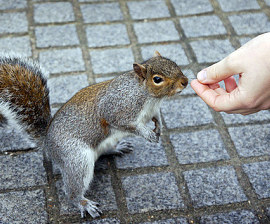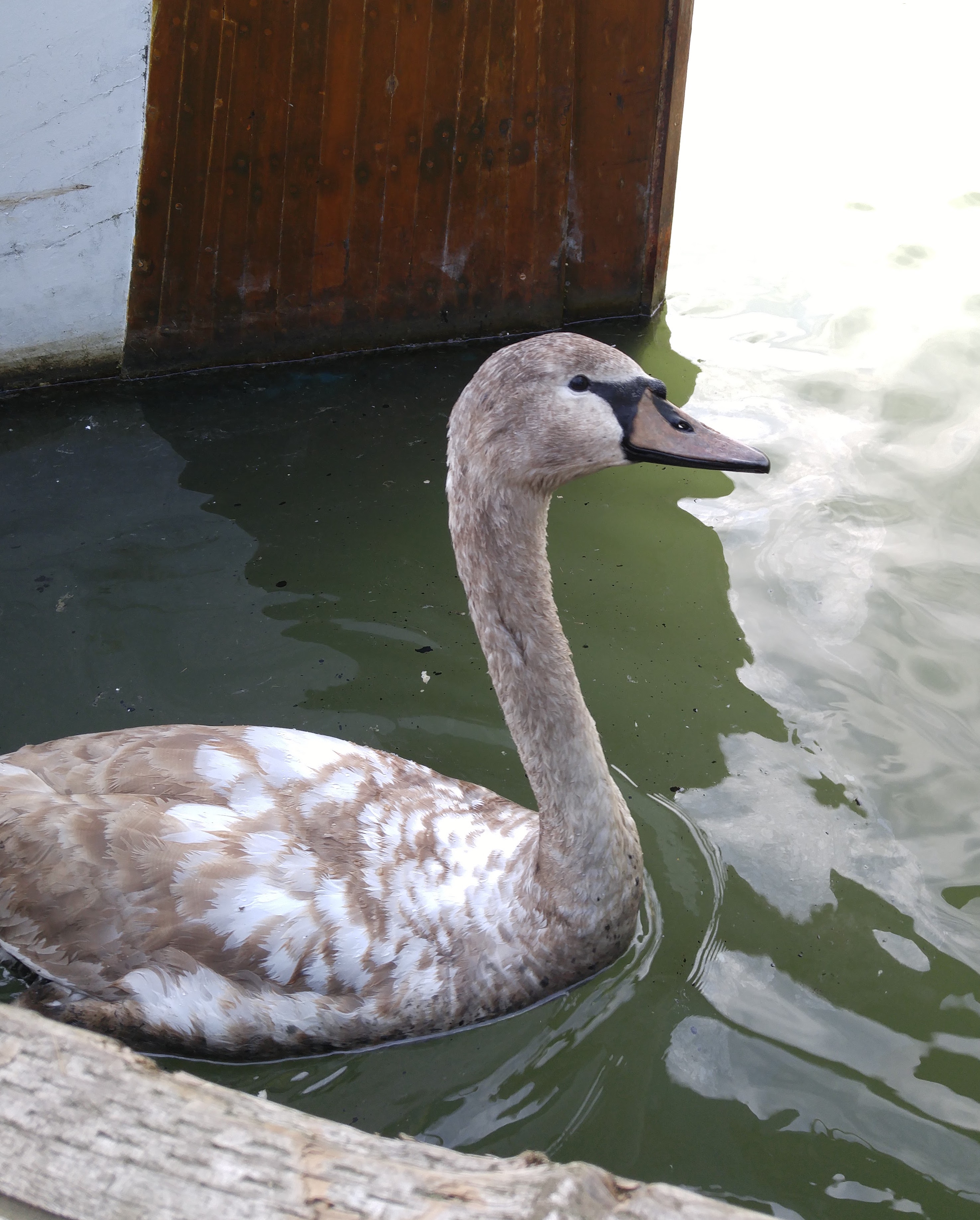 Have you ever gone to the park and saw someone feeding bread to pigeons? Or maybe you’ve walked around on campus and decided to throw some food at a squirrel?
Have you ever gone to the park and saw someone feeding bread to pigeons? Or maybe you’ve walked around on campus and decided to throw some food at a squirrel?
Both situations involve a person taking the opportunity to feed animals in order to admire or interact with them. Opportunistic feeding is the action of feeding wildlife at any time and anywhere when there is a chance to do so. Often, people believe they are benefiting and enhancing the survival of the animal by providing them with a source of food—especially during the cold winters.
Studies show that the feeding of human food can:
- divert the behaviour of animals
- cause injury or death
- increase the animals’ vulnerability to predators, poachers, or collisions with vehicles
- cause the animal to lose its fear of humans
- transmit diseases
- cause agression in animals
———-
 A Study on People’s Attitudes Towards Wildlife Feeding:
A Study on People’s Attitudes Towards Wildlife Feeding:
In a study by Mallick and Driessen (2003) on the effectiveness of ‘Keep Wildlife Wild’ signs in Tasmania’s national parks and park visitors’ attitudes towards wildlife feeding, they found that 92.2% of the 118 respondents were against wildlife feeding and only 3.5% of visitors were in favour of wildlife feeding. Of the 3.5% visitors who supported wildlife feeding, two respondents believed they were helping the animal in survival, while one visitor considered wildlife feeding was an advantage for visitors to view the animals. When asked whether the visitors had seen the ‘Keep Wildlife Wild’ signs at the parks, about 70% visitors claimed they saw them, however, 30% of that amount had no opposition on wildlife feeding. Much of the opportunistic feeding observed in involved visitors directly feeding animals with bread or potato chips. Thus, whether there is a sign prohibiting wildlife feeding, the action truly depends on one’s point of view. Though organizations attempt to reinforce regulations or rules, some people still ignore them, as wildlife feeding is commonly interpreted as a non-threatening action towards the animals.
———-
STORY TIME!

One of the three geese I saw at Steveston.
Back in October, my relatives came over from China to visit my family, as well as to explore the Lower Mainland while they’re at it. One sunny Sunday, we decided to drive them down to Steveston to see the ocean and the various docked fisherman boats that were selling fresh seafood. While we were strolling along the dock, my relatives spotted three geese drifting by the boats and the dock. Immediately, many people began crowding around the geese and attempted to hand feed them with whatever food they had so they could quickly snap a photo with their cellphones. Parents even allowed their children to lean over the dock so that they could try to pet the geese. I, too, was fascinated with the geese and wanted a picture. At that moment, I never thought about being harmed by the geese or accidentally aggravating them. However, when I look back to that day, I realize how many of us are unaware of what wildlife can do to us and how we might impact them. Many people love the thrill of seeing animals that are not commonly encountered on a daily basis, which is why we attempt to interact with them.
